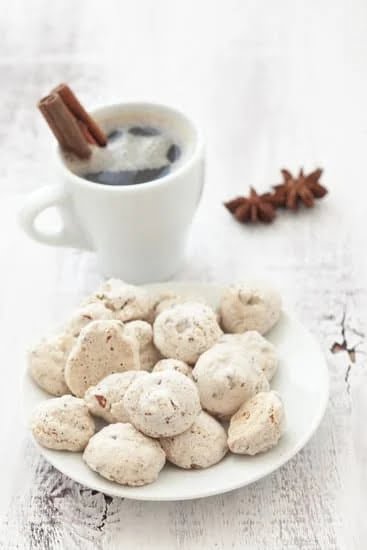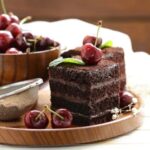Bundt cakes have long been a favorite dessert option due to their beautiful shape and moist, dense texture. But when you combine the classic appeal of a bundt cake with the refreshing and zesty flavors of lemon, you end up with a truly irresistible treat. A decorated lemon bundt cake not only offers a burst of citrus goodness but also adds a touch of elegance to any occasion.
Lemon’s tangy and bright flavor profile lends itself perfectly to baking, making it an ideal choice for a bundt cake. The addition of lemon zest and juice infuses the batter with just the right amount of tanginess, creating a dessert that is both vibrant and satisfyingly sweet. Whether you’re indulging in a slice on its own or pairing it with complementary flavors like raspberry or coconut, this lemon bundt cake is sure to tantalize your taste buds.
But what truly takes this dessert to new heights is its presentation. Decorating a lemon bundt cake elevates its visual appeal, making it even more enticing. From glazing techniques that create an alluring glossy finish to intricate piping designs that turn the humble bundt cake into a work of art, there are endless possibilities for embellishing this already delicious treat.
In this article, we will explore different decoration ideas, share recipes for complementary frostings and glazes, and guide you through the process of adding those finishing touches that will make your lemon bundt cake simply stunning. So prepare your mixing bowls and get ready to embark on an exciting culinary adventure as we celebrate the citrus splendor of decorated lemon bundt cakes.
The Essential Ingredients for a Perfect Lemon Bundt Cake
When it comes to making a perfect lemon bundt cake, there are a few essential ingredients that you cannot overlook. These ingredients not only contribute to the delightful flavor of the cake but also ensure its moist and tender texture. Let’s take a closer look at what you’ll need to create a lemon bundt cake that will have everyone going back for seconds.
First and foremost, fresh lemons are key to infusing the cake with that bright and tangy flavor. You’ll want to use both lemon zest and lemon juice in the batter to achieve the perfect balance. The zest provides aromatic oils that give the cake a burst of citrus, while the juice adds acidity and tanginess. Be sure to use organic lemons if possible, as they tend to have more flavor.
Another crucial ingredient is butter. It adds richness and moisture to the cake, resulting in a tender crumb. Use unsalted butter at room temperature for easy creaming with the sugar. The combination of butter and sugar creates air pockets when beaten together, giving the cake structure and making it light and fluffy.
Next up is flour, which serves as the base of the batter. All-purpose flour works well in most bundt cake recipes since it strikes a good balance between tenderness and structure. Measure your flour accurately by spooning it gently into your measuring cup and leveling it off with a straight edge. This helps prevent adding too much flour, which can make your cake dense.
Sugar is another essential ingredient for both sweetness and moisture retention. Granulated sugar is commonly used in bundt cakes because it dissolves easily during mixing. It’s important not to reduce or omit sugar from the recipe as it plays an important role in creating the desired texture.
Lastly, eggs bind all the ingredients together while lending moisture and richness to the batter. Large eggs are typically used in baking recipes since their size has been standardized for recipe development purposes. Make sure your eggs are at room temperature for better incorporation with the other ingredients.
By using these essential ingredients, you’ll be well on your way to creating a perfect lemon bundt cake that will satisfy any craving for a refreshing and citrusy dessert. Don’t skimp on quality – choose the best lemons, butter, flour, sugar, and eggs you can find for optimal flavor. So gather your ingredients and let’s start baking.
Baking the Perfect Lemon Bundt Cake
When it comes to baking the perfect lemon bundt cake, following a precise step-by-step guide is essential. The right mixture of ingredients and baking techniques ensures that you achieve the ideal texture and appearance.
To begin, gather all the necessary ingredients for your lemon bundt cake batter. You will need fresh lemon zest and lemon juice to infuse that tangy flavor into the cake. Butter, flour, sugar, and eggs are also essential components for creating a moist and fluffy bundt cake. It is crucial to use high-quality ingredients for optimal taste.
Once you have all your ingredients ready, it’s time to mix the batter. Start by creaming together the butter and sugar until light and fluffy. Gradually add in the eggs, one at a time, incorporating each one fully before adding the next. Sift in the flour and gently fold it into the mixture to avoid overmixing.
As you prepare your batter, preheat your oven to the recommended temperature specified in your recipe. Grease and flour your bundt pan thoroughly to prevent sticking once baked. Pour the batter into the prepared pan, ensuring an even distribution.
The baking process requires attention to detail. Place your filled bundt pan into the preheated oven and bake according to your recipe’s instructions. While baking, keep an eye on both texture and color – a perfectly baked lemon bundt cake should have a golden brown crust with a delicate crumb when tested with a toothpick.
Alternative baking methods such as convection ovens may require slight adjustments in temperature or baking duration. Follow specific guidelines provided by your oven manufacturer or consult with experienced bakers for advice on using different oven types.
By following these steps carefully, you are on your way to achieving a deliciously baked lemon bundt cake that will be a showstopper at any event or gathering.
Creative Decorating Ideas for a Stunning Lemon Bundt Cake
Decorating a lemon bundt cake is a fantastic opportunity to let your creativity shine and elevate the presentation of this already delicious dessert. There are countless creative decorating ideas that can take your lemon bundt cake from simple to stunning. In this section, we will explore various decoration techniques and provide recipes for different glazes and frostings that complement the refreshing lemon flavor.
One popular decorating technique for a lemon bundt cake is glazing. A simple yet elegant option, glazing involves pouring a thin, sweet liquid over the top of the cake, allowing it to drizzle down the sides. Lemon glaze is an obvious choice, made with powdered sugar and freshly squeezed lemon juice for a burst of citrus flavor. You can also experiment with other flavors such as vanilla or almond to add depth to the overall taste.
If you’re feeling more adventurous, frosting is another great option for decorating your lemon bundt cake. Cream cheese frosting pairs wonderfully with the tangy lemon flavor and adds richness and creaminess to each bite. Pipe the frosting onto the cooled cake using a piping bag with a star-shaped tip for an eye-catching design. Alternatively, you can use an offset spatula to spread the frosting in decorative swirls or create smooth surfaces for a sleek finish.
Fruit arrangements are another way to make your lemon bundt cake visually appealing. Consider arranging fresh berries like raspberries, blueberries, or strawberries on top of the glazed or frosted surface. The vibrant colors of these fruits create a beautiful contrast against the yellow zest of the cake, making it both aesthetically pleasing and appetizing. Additionally, you can add edible flowers such as pansies or violets for a whimsical touch.
Remember that when decorating your lemon bundt cake, presentation matters just as much as taste. Take your time and pay attention to details like color combinations, symmetry, and cleanliness while applying the decorations. Practice makes perfect when it comes to decorating, so don’t be afraid to experiment and let your imagination run wild. With a little practice and creativity, you can create a stunning lemon bundt cake that will impress your guests and make any occasion extra special.
Adding a Finishing Touch
Decorating a cake is not just about making it visually appealing; it’s also an opportunity to enhance the flavors and add an extra touch of creativity. When it comes to a lemon bundt cake, there are endless possibilities for edible decorations that can take your dessert to the next level.
One popular option for decorating a lemon bundt cake is by using candied lemon slices. These sweet and tangy slices not only add a burst of citrus flavor but also create an elegant and eye-catching presentation.
To make candied lemon slices, simply slice lemons thinly, remove any seeds, and simmer them in a mixture of sugar and water until they become translucent. Once cooled, arrange them on top of the cake or around the edges for a beautiful finishing touch.
Another unique and stunning option for decoration is the use of edible flowers. Not only do these flowers provide a visually pleasing aesthetic, but they can also infuse subtle floral notes into the cake. Some popular edible flower options include lavender blossoms, rose petals, and violets. Ensure that you source these flowers from trusted suppliers that offer edible varieties free from harmful chemicals or pesticides.
If you’re looking for a touch of luxury and extravagance, consider using gold leaf as an edible decoration for your lemon bundt cake. The delicate shimmering effect adds elegance and sophistication to any dessert. You can apply gold leaf to the top of your cake or create intricate designs on its surface. Just remember to handle gold leaf with clean hands or tweezers to prevent it from sticking together.
To achieve an aesthetically pleasing color palette for your decorated lemon bundt cake, consider adding complementary elements like blueberries or edible lavender. Blueberries can be scattered around the base of the cake or used as accents along with other decorations like fresh mint leaves or sliced strawberries. Edible lavender buds add both beauty and fragrance when sprinkled over the glazed or frosted surface of the cake.
Pairing and Serving Suggestions for Lemon Bundt Cake
A beautifully decorated lemon bundt cake is a delight to the eyes and the taste buds. To elevate the dining experience, it’s essential to pair and serve this citrusy treat with complementary flavors and present it in an aesthetically pleasing manner. Here are some suggestions on how to enhance and showcase your lemon bundt cake:
Complementary Flavors:
When serving a lemon bundt cake, consider flavors that complement its tangy profile. The bright acidity of raspberries pairs well with the citrus notes of lemon, creating a vibrant and refreshing combination. Alternatively, you can opt for tropical flavors like coconut, which add richness and subtlety to the tanginess. The creamy coconut enhances the overall flavor profile of the cake.
Serving Accompaniments:
To add a touch of indulgence, serve slices of lemon bundt cake with whipped cream or a scoop of lemon sorbet. The creamy texture of whipped cream balances out the tartness of the lemon, while the coolness of sorbet refreshes the palate between bites. Additionally, these accompaniments provide cooling contrast to a warm slice of cake.
Presentation Ideas:
The presentation of a lemon bundt cake can further elevate its appeal. Serve each slice on decorative cake stands or plates to showcase its intricate design and make it visually enticing. Dusting powdered sugar lightly over the top adds elegance while giving it an extra touch of sweetness.
Serving individual slices on small dessert plates with fresh berries or mint leaves as garnishes can also enhance its visual appeal. Consider adding blueberries or edible lavender sprigs for pops of color that complement both taste and aesthetics.
By pairing your lemon bundt cake thoughtfully and presenting it creatively, you will not only satisfy your guests’ taste buds but also create an impressive centerpiece for any occasion. So go ahead and experiment with different flavors and presentations to truly celebrate the citrus splendor of a decorated lemon bundt cake.
Tips for Storing and Preserving the Freshness of a Decorated Lemon Bundt Cake
Once you have baked and decorated your delicious lemon bundt cake, it’s important to know how to properly store it to maintain its moisture and flavor. Here are some tips for storing and preserving the freshness of a decorated lemon bundt cake:
- Room Temperature Storage: If you plan on consuming the cake within a day or two, room temperature storage is ideal. Place the cake on a cake stand or in an airtight container at room temperature away from direct sunlight. This will help retain moisture and prevent the cake from drying out.
- Refrigerator Storage: If you need to store the lemon bundt cake for more than two days, refrigeration is recommended. Wrap the cake tightly in plastic wrap or transfer it to an airtight container before placing it in the refrigerator. The cool temperature will help keep the cake fresh for a longer period.
- Freezing: Lemon bundt cakes can also be frozen for longer-term storage. Wrap individual slices or the entire cake tightly in plastic wrap, followed by a layer of aluminum foil or place it in a freezer-safe container. Frozen lemon bundt cakes can be kept for up to three months. When ready to serve, thaw the cake in the refrigerator overnight before bringing it to room temperature.
| Storage Method | Recommended Duration |
|---|---|
| Room Temperature | 1-2 days |
| Refrigerator | Up to 5 days |
| Freezer | Up to 3 months |
Remember, it’s essential to properly wrap and seal the cake to prevent any moisture loss or absorption of other odors from the refrigerator. This will help ensure that your decorated lemon bundt cake stays fresh and flavorful until you are ready to enjoy it again.
Lemon Bundt Cake Variations
Exploring Flavor Variations
One of the joys of baking is the ability to experiment with different flavors and ingredients to create unique and delicious treats. When it comes to lemon bundt cakes, there are numerous flavor variations that can take this classic dessert to new heights.
Adding poppy seeds to the batter creates a delightful texture and adds nutty undertones that complement the brightness of the lemon. For those who love the tropical taste, incorporating shredded coconut into the cake batter adds a touch of sweetness and a hint of exotic flavor.
If you’re looking for a burst of fruity goodness in every bite, consider adding berries such as raspberries or blueberries to your lemon bundt cake. These juicy berries add vibrant colors and natural sweetness that pairs perfectly with the tanginess of the lemon. Swirling in a homemade raspberry compote or blueberry glaze can elevate your bundt cake even further, creating an impressive marbled effect.
Getting Creative with Designs
While taste is undoubtedly important, don’t forget about the visual appeal of your lemon bundt cake. There are endless possibilities for creative designs that will make your cake stand out. One popular option is using a decorative bundt pan with intricate patterns, which will imprint on the cake as it bakes. This simple trick can turn an ordinary dessert into an eye-catching centerpiece.
Another design idea is incorporating layers within your bundt cake. Create multiple flavors by alternating layers of lemon batter with other complementary flavors like raspberry or coconut. The contrasting colors and textures will not only impress visually but also provide an exciting taste experience for those lucky enough to enjoy your creation.
To add an elegant finishing touch, consider dusting your lemon bundt cake with powdered sugar or drizzling it with a glossy glaze made from lemon juice and confectioner’s sugar. These simple yet effective techniques instantly elevate the presentation and give your cake a professional look.
Recipes for Exotic Lemon Bundt Cake Variations
For those looking to try something truly unique and different, here are a few recipes for exotic lemon bundt cake variations:
- Lemon-Lavender Bundt Cake: Infuse dried lavender flowers into the sugar before incorporating it into the batter. Add a touch of lavender extract to intensify the floral flavor and create a delightful pairing with the lemon zest and juice.
- Lemon-Blueberry Glaze: Make a tangy blueberry glaze using fresh blueberries, lemon juice, and powdered sugar. Pour it over your baked lemon bundt cake for a burst of sweet and tart flavors.
Whether you choose to experiment with flavors or designs, remember that baking is an opportunity to let your creativity shine. With these variations, you can take the classic lemon bundt cake and transform it into an extraordinary dessert that will impress and delight anyone who takes a bite.
Conclusion
In conclusion, a decorated lemon bundt cake is a delightful and visually stunning dessert that celebrates the citrus splendor of lemons. From its irresistible charm to its refreshing and zesty flavor profile, this cake is sure to be a hit for any occasion. Throughout this article, we have explored the essential ingredients and baking techniques needed to create the perfect lemon bundt cake.
By using fresh and high-quality ingredients like lemon zest, lemon juice, butter, flour, sugar, and eggs, you can ensure that your cake will burst with flavor. Properly measuring and preparing these ingredients is crucial for achieving optimal results. Additionally, we have discussed creative decorating ideas such as glazing, frosting, piping, and fruit arrangements. These decoration techniques can elevate the presentation of your cake and make it truly stunning.
To add a finishing touch to your lemon bundt cake, consider incorporating edible decorations like candied lemon slices or edible flowers. These decorations not only enhance the visual appeal of the cake but also contribute to its taste. Pairing suggestions such as raspberry or coconut provide complementary flavors that perfectly complement the tangy lemon taste. Serving suggestions include whipped cream or a scoop of lemon sorbet, further enhancing the overall dessert experience.
Proper storage is essential in order to preserve the freshness and moisture of your decorated lemon bundt cake. Whether stored at room temperature or in the refrigerator, it is important to use airtight containers or plastic wrap to prevent drying out. By following these tips and experimenting with different flavors and designs, you can create your own unique variations of a lemon bundt cake.
Frequently Asked Questions
How do you decorate the top of a bundt cake?
To decorate the top of a bundt cake, there are several options you can consider. One common method is to simply dust the cake with powdered sugar. This adds a touch of elegance and complements the natural beauty of the cake’s shape.
Another popular way to decorate a bundt cake is by drizzling it with icing or glaze. You can create intricate patterns or a simple drizzle for a more casual look. Alternatively, you can embellish the cake with fresh fruit, berries, or edible flowers, which not only add color but also provide a refreshing and attractive element to the presentation.
What is the best way to put icing on a bundt cake?
The best way to put icing on a bundt cake is by first ensuring that the cake has cooled completely. If you attempt to ice the cake when it is still warm, the icing may become runny and slide off instead of adhering properly. Once cooled, prepare your desired icing recipe based on personal preference and consistency preferences.
Pour or spread the icing evenly over the top of the bundt cake using either a spoon or an offset spatula. Make sure to cover all areas and allow any excess icing to drip down along the sides for an appealing appearance.
Do you glaze a bundt cake hot or cold?
When it comes to glazing a bundt cake, it is generally recommended to glaze it while the cake is still slightly warm rather than piping hot right out of the oven. By allowing it to cool for about 10-15 minutes before applying the glaze, you give it enough time to set slightly without becoming cold enough that the glaze won’t spread smoothly over its surface. Glazing while warm also allows some absorption into the cake, resulting in enhanced flavor and moisture retention as opposed to placing cold glaze on a fully cooled cake where it might just sit on top without being absorbed into its crumb structure effectively.
However, be cautious not to pour extremely hot glazes onto slightly warm cakes as they could cause them to become overly moist or even break apart. Provide enough cooling time for both the cake and glaze while still maintaining warmth for optimal results.

Welcome to our cake decorating blog! My name is Destiny Flores, and I am the proud owner of a cake decorating business named Cake Karma. Our mission is to provide delicious, beautiful cakes for all occasions. We specialize in creating custom cakes that are tailored specifically to each customer’s individual needs and tastes.





